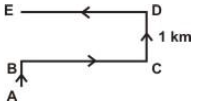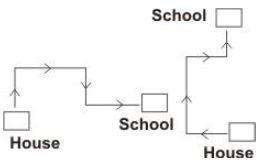East, west, north, and south are the four cardinal points in the world, as is general knowledge. In addition, we have a firm grasp of the four cardinal directions: south-east, southwest, northeast, and northwest. In order to solve the problem, we are going to apply all eight of these directions that including thinking.
We are functioning under the assumption that the front direction is north and the back direction is south. The West direction is to our left, whereas the East direction is to our right. Additionally, we are aware that the sun traverses the sky daily from east to west. When facing the sun, the direction in front of a person is East, whereas the direction behind them is West. To his or her right will be the South, while to his or her left will be the North.
Facts regarding logic
• A person’s shadow will be thrown towards the direction of the west if they are facing east as the sun rises.
• At sunrise, a person with their back to the north will cast their shadow to the west or their left, depending on the direction in which they are facing.
• At sunrise, a person with their back to the south will observe their shadow shift to the right if they are facing south (i.e., towards West).
• A person with their back to the north at sunset will see their shadow to the right. This is because the sun sets in the west. • Since the sun’s rays are shining exactly downward at midday, no shadow can be cast.
Direction and distance in reasoning
There are many different types of questions that may be asked regarding Direction and Distance. These are questions on the location, as well as the direction and distance, between two or more people, objects, components, etc. Consequently, there is a vast array of potential questions that can be created based on the position of any person, thing, or item. This section will discuss the mechanics underlying the concepts of direction and distance. Let’s comprehend it using the following fundamental guidelines:
The four cardinal directions are North (N), South (S), East (E), and West (W), while the four ordinal directions (also referred to as the intercardinal direction) are North-East (NE), North-West (NW), South-East (SE), and South-West (SW) (SW).
Obtaining guidance from the sun
The Sun illuminates only one side of the planet. The Earth’s rotation causes day and night. Due to the tilt of the planet toward the east, the Sun appears to rise toward the east. Due to the Earth’s eastward rotation, the Sun appears to move westward across the sky during the day. The Sun departs, or sets, in the west due to the rotation of the Earth.
The Sun appears to be most useful for determining east-west directions. In winter (north of the equator), the Sun rises and sets to the south of true east and west, and in summer, it rises and sets to the north of true east and west. The opposite is true south of the equator. The Sun rises and sets exactly in the east and west on only two days every year. The spring and fall equinoxes occur on March 21 and September 23, respectively. This is true everywhere on Earth with the exception of the polar regions. Observe an east-west street at sunset or sunrise to determine this. No of the season, for anyone residing north of the Tropic of Cancer (approximately at a latitude of 23.5° north), the Sun will always be in the south at midday. On every sunny day, a shadow stick or a watch can be used to determine the direction of the south. Similarly, for those who reside south of the Tropic of Capricorn (about 23.5° south), the midday sun will always be directly straight north.
Assumptions concerning direct reasoning
The principal direction change entails a 180-degree turn in the prior direction. For instance, when travelling from east to north or south, there is a 90-degree change. The deviation is only 45 degrees in the cardinal direction. For example, there is a 45-degree change when travelling from north to north-east or north to north-west. Right-hand turns must always be made in a clockwise orientation. When performing a left turn, you must always turn against the hands of the clock. By applying the concept of Pythagoras’ theorem to direction reasoning, it is possible to determine the travelled distance or the shortest distance between two locations. All of these distances are measured in a straight line between two designated sites.
Conclusion
The four cardinal directions are North (N), South (S), East (E), and West (W). A person with their back to the north at sunset will see their shadow to the right. Since the sun’s rays are shining exactly downward at midday, no shadow can be cast. The Sun rises and sets exactly in the east and west on only two days of the year. For those living north of the Tropic of Cancer, the Sun will always be in the south at midday. This is true everywhere on Earth with the exception of the polar regions.
 Profile
Profile Settings
Settings Refer your friends
Refer your friends Sign out
Sign out








